#collected poems: 1924-1955
Text

George Seferis, from Collected Poems 1924-1955; "Stratis Thalassinos Among the Agapanthi"
Text ID: The first thing God made is love / then comes blood / and the thirst for blood
7K notes
·
View notes
Text








on giving and receiving
savior complex, phoebe bridgers / wild geese, mary oliver / from the collected poems 1924-1955, george seferis / i loved you before i was born, li-young lee / thank you for the venom, my chemical romance, the fellowship of the ring (2001), peter jackson / geyser, mitski
251 notes
·
View notes
Photo




“give me your hands, give me your hands, give me your hands” — George Seferis, tr. by Edmund Keeley and Philip Sherrard, from The Collected Poems 1924-1955 (X)
#sebchal#sebastian vettel#seb vettel#charles leclerc#sv5#cl16#f1#formula 1#scuderia ferrari#f1 drivers x quotes
52 notes
·
View notes
Text

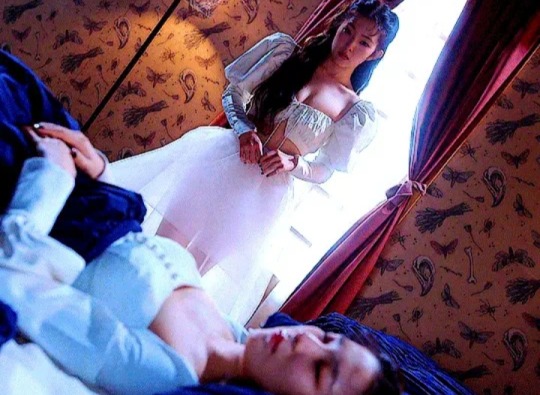








I'm a little monster
Monster, Red Velvet
Florence and the machine//In the 25th year of marriage, it goes on”, Alicia Ostriker//George Seferis, from Collected Poems 1924-1955; "Stratis Thalassinos Among the Agapanthi"//Hansel and Gretel, Anne Sexton//you are the apple, lady lamb
#red velvet#irene#seulgi#monster#kang seulgi#bae joohyun#web weaving#mine#quotes#poetry#words#horror#cassandra#florence and the machine#alicia ostriker#blood#blood thirst#love#george seferis#anne sexton
39 notes
·
View notes
Text

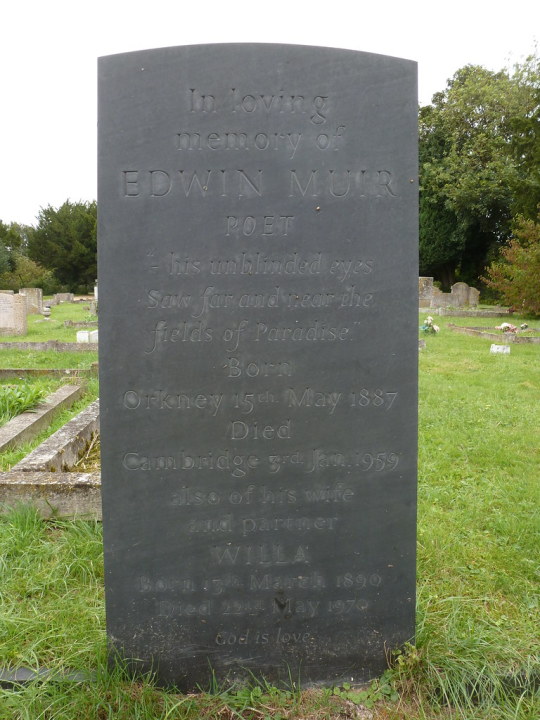

January 3rd 1959 saw the death of the poet and scholar Edwin Muir.
He was was born on a farm in Deerness , Orkney Islands in the remote northeast of Scotland. In 1901, when he was 14, his father lost the farm and the family moved to Glasgow. In Glasgow first his father, then his two brothers, and then his mother died in the space of a few years. His life as a young man in Glasgow was a depressing experience for him, involving a succession of unpleasant jobs. In 1919 he married Willa Anderson (they would later collaborate on English translations of such writers as Franz Kafka and Hermann Broch) and moved to London. From 1921 - 1923 he was in Prague, Dresden, Italy, Salzburg and Vienna; he returned to England in 1924. Between 1925 and 1956 Muir published seven volumes of poetry which were collected after his death and published in 1991 as The Complete Poems of Edwin Muir. From 1927 to 1932 he published three novels and in 1935 he came to St. Andrews where he produced his controversial Scott and Scotland (published in 1936). From 1946-1949 he was Director of the British Council in Prague and Rome. 1950 saw his appointment as Warden of Newbattle Abbey College (college for working class men) near Edinburgh and in 1955 he was made Norton Professor of English at Harvard University. He returned to England in 1956 but died in 1959 at Swaffam Priory , Cambridge and was buried near Cambridge.
His childhood in remote and unspoiled Orkney represented an idyllic "Eden" to Muir, while his family's move to the city corresponded in his mind to a deeply disturbing encounter with the "fallen" world. The emotional tensions of that dichotomy shaped much of his work and deeply influenced his life. His psychological distress led him to undergo Jungian analysis in London. A vision in which he witnessed the Creation strengthened the Edenic myth in his mind, leading him to see his life as an individual and his career as a poet as a working-out of archetypal fable. In his Autobiography he wrote, "the life of every man is an endlessly repeated performance of the life of man"; our deeds on earth constitute "a myth which we act almost without knowing it." Alienation, paradox, the existential dyads of good and evil, life and death, love and hate, and images of journeys, labyrinths, time and places fill his work.
His Scott and Scotland advanced the claim that Scotland can only create a national literature by writing in English; an opinion which placed him in direct opposition to the Lallans movement of Hugh MacDiarmid. He had little sympathy for Scottish nationalism. Remembered for his deeply felt and vivid poetry in plain, unostentatious language with few stylistic preoccupations, Muir is a relatively little known but significant modern poet. In 1965 a volume of his selected poetry was edited and introduced by T. S. Eliot. An excellent essay discussing Muir's literary career (Edwin Muir?s Journey, by Robert Richman ) is available in the online archives of The New Criterion. Many of Edwin and Willa Muir's translations of German novels are still in print.
Edwin Muir died in Cambridge on this day in 1959 and is buried in the churchyard of St Mary, Swaffham Prior, the village in which he spent his final years in Priory Cottage, directly opposite the churchyard. Muir is also remembered in St Magnus Cathedral, Kirkwall, Orkney
10 notes
·
View notes
Photo

James Baldwin August 2, 1924 – December 1, 1987 HAPPY BIRTHDAY - R.I.P. writer and activist. As a writer, he garnered acclaim across various mediums, including essays, novels, plays, and poems. His first novel, Go Tell It on the Mountain, was published in 1953; decades later, Time magazine included the novel on its list of the 100 best English-language novels released from 1923 to 2005. His first essay collection, Notes of a Native Son, was published in 1955. (at DuSable Museum of African American History) https://www.instagram.com/p/Cgx3_RhpTSc/?igshid=NGJjMDIxMWI=
0 notes
Text

George Seferis, tr. by Edmund Keeley and Philip Sherrard, from The Collected Poems 1924-1955; “The harbor is old”
0 notes
Photo




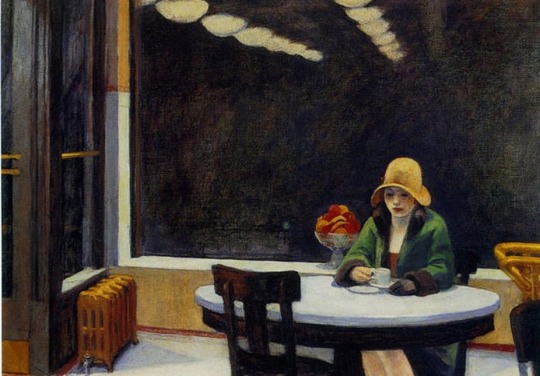
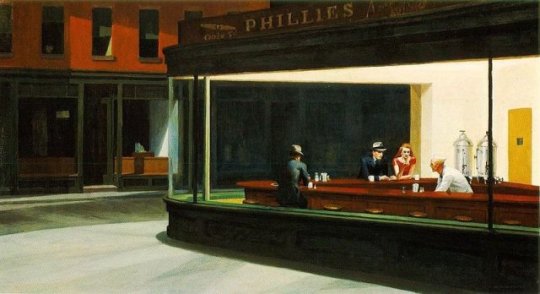



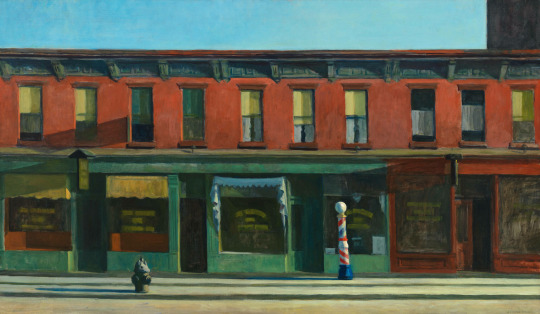
on loneliness
li bai drinking alone under the moon \\ guy denning (1965) \\ natalia drepina lacrymatory \\ george seferis the collected poems 1924-1955: “the harbor is old” (tr. edmund keeley and philip sherrard) \\ edward hopper automat (1927) \\ edward hopper nighthawks (1942) \\ sarah teasdale morning song \\ edward hopper morning sun (1952) \\ fiona apple \\ edward hopper early sunday morning
#on loneliness#loneliness#lonely#aloneness#being alone#webweaving#web weaving#my webweaving#mine#guy denning#natalia drepina#li bai#george seferis#edmund keeley#philip sherrard#the collected poems#the collected poems 1924-1955#the harbor is old#sarah teasdale#morning song#poetry#fiona apple#edward hopper#automat#paintings#painting#famous painting#edward hopper is like the king of this theme#nighthawks#morning sun
66 notes
·
View notes
Text

George Seferis, tr. by Edmund Keeley and Philip Sherrard, from The Collected Poems 1924-1955; “In the Kyrenia District”
#excerpts#writings#literature#poetry#george seferis#fragments#selections#words#quotes#poetry collection#lit#poetry in translation#typography#greek literature#greek poetry#moonlight
7K notes
·
View notes
Text







Descendants 2 (2017) / Ocean Vuong, On Earth We’re Briefly Gorgeous / Safia Elhillo, “The Stranger,” from Home Is Not a Country / George Seferis (tr. Edmund Keeley & Philip Sherrard), "Sleep Wrapped You," from The Collected Poems 1924-1955 / Maggie Smith, Good Bones
#descendants#jal#jay son of jafar#mal bertha#descendants edit#my edits#my web weaving#descendants web weaving#web weaving#descendants fandom#I keep staring at this#in my drafts folder#and I can't decide if I like it or not#I've gone through seven stages of grief trying to get it right#so you know what#I'm just gonna say fuck it at this point#it is what it is!!
106 notes
·
View notes
Text

George Seferis, tr. by Edmund Keeley and Philip Sherrard, from The Collected Poems 1924-1955; “The harbor is old”
1 note
·
View note
Text

George Seferis, from Collected Poems 1924-1955; "Stratis Thalassinos Among the Agapanthi"
Text ID: The dead know the language of flowers only; so they keep silent
1K notes
·
View notes
Photo
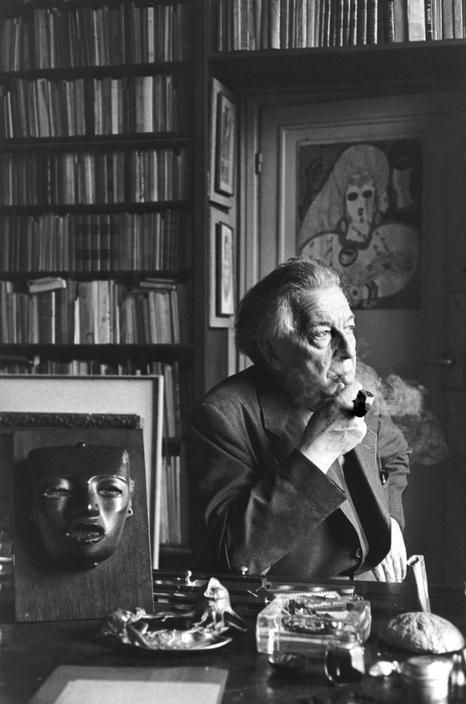
André Robert Breton was born on February 18, 1896. He was a French writer and poet. He is known best as the co-founder, leader, principal theorist and chief apologist of surrealism. His writings include the first Surrealist Manifesto (Manifeste du surréalisme) of 1924, in which he defined surrealism as "pure psychic automatism".
Along with his role as leader of the surrealist movement he is the author of celebrated books such as Nadja and L'Amour fou. Those activities combined with his critical and theoretical work for writing and the plastic arts, made André Breton a major figure in twentieth-century French art and literature.
Breton was an avid collector of art, ethnographic material, and unusual trinkets. He was particularly interested in materials from the northwest coast of North America. During a financial crisis he experienced in 1931, most of his collection (along with that of his friend Paul Éluard) was auctioned. He subsequently rebuilt the collection in his studio and home at 42 rue Fontaine. The collection grew to over 5,300 items: modern paintings, drawings, sculptures, photographs, books, art catalogs, journals, manuscripts, and works of popular and Oceanic art.
French anthropologist Claude Lévi-Strauss, in an interview in 1971, spoke about Breton's skill in determining the authenticity of objects. Strauss even described their friendship while the two were living in New York: "We lived in New York between 1941 and 1945 in a great friendship, running museums and antiquarians together. I owe him a lot about the knowledge and appreciation of objects. I've never seen him [Breton] doing a mistake on exotic and unusual objects. When I say a mistake, I mean about its authenticity but also its quality. He [Breton] had a sense, almost of divination."
After Breton's death on 28 September 1966, his third wife, Elisa, and his daughter, Aube, allowed students and researchers access to his archive and collection. After thirty-six years, when attempts to establish a surrealist foundation to protect the collection were opposed, the collection was auctioned by Calmels Cohen at Drouot-Richelieu. A wall of the apartment is preserved at the Centre Georges Pompidou.
Nine previously unpublished manuscripts, including the Manifeste du surréalisme, were auctioned by Sotheby's in May 2008.
Works
1919: Mont de Piété – [Literally: Pawn Shop]
1920: S'il Vous Plaît – Published in English as: If You Please
1920: Les Champs magnétiques (with Philippe Soupault) – Published in English as: The Magnetic Fields
1923: Clair de terre – Published in English as: Earthlight
1924: Les Pas perdus – Published in English as: The Lost Steps
1924: Manifeste du surréalisme – Published in English as: Surrealist Manifesto
1924: Poisson soluble – [Literally: Soluble Fish]
1924: Un Cadavre – [Literally: A Corpse]
1926: Légitime défense – [Literally: Legitimate Defense]
1928: Le Surréalisme et la peinture – Published in English as: Surrealism and Painting
1928: Nadja – Published in English as: Nadja
1930: Ralentir travaux (with René Char and Paul Éluard) – [Literally: Slow Down, Men at Work]
1930: Deuxième Manifeste du surréalisme – Published in English as: The Second Manifesto of Surrealism
1930: L'Immaculée Conception (with Paul Éluard) – Published in English as: Immaculate Conception
1931: L'Union libre – [Literally: Free Union]
1932: Misère de la poésie – [Literally: Poetry's Misery]
1932: Le Revolver à cheveux blancs – [Literally: The White-Haired Revolver]
1932: Les Vases communicants – Published in English as: Communicating Vessels
1933: Le Message automatique – Published in English as: The Automatic Message
1934: Qu'est-ce que le Surréalisme? – Published in English as: What Is Surrealism?
1934: Point du Jour – Published in English as: Break of Day
1934: L'Air de l'eau – [Literally: The Air of the Water]
1935: Position politique du surréalisme – [Literally: Political Position of Surrealism]
1936: Au Lavoir noir – [Literally: At the black Washtub]
1936: Notes sur la poésie (with Paul Éluard) – [Literally: Notes on Poetry]
1937: Le Château étoilé – [Literally: The Starry Castle]
1937: L'Amour fou – Published in English as: Mad Love
1938: Trajectoire du rêve – [Literally: Trajectory of Dream]
1938: Dictionnaire abrégé du surréalisme (with Paul Éluard) – [Literally: Abridged Dictionary of Surrealism]
1938: Pour un art révolutionnaire indépendant (with Diego Rivera) – [Literally: For an Independent Revolutionary Art]
1940: Anthologie de l'humour noir – Published in English as: Anthology of Black Humor
1941: "Fata Morgana" – [A long poem included in subsequent anthologies]
1943: Pleine Marge – [Literally: Full Margin]
1944: Arcane 17 – Published in English as: Arcanum 17
1945: Le Surréalisme et la peinture – Published in English as: Surrealism and Painting
1945: Situation du surréalisme entre les deux guerres – [Literally: Situation of Surrealism between the two wars]
1946: Yves Tanguy
1946: Les Manifestes du surréalisme – Published in English as: Manifestoes of Surrealism
1946: Young Cherry Trees Secured against Hares – Jeunes cerisiers garantis contre les lièvres [Bilingual edition of poems translated by Edouard Roditi]
1947: Ode à Charles Fourier – Published in English as: Ode To Charles Fourier
1948: Martinique, charmeuse de serpents – Published in English as: Martinique: Snake Charmer
1948: La Lampe dans l'horloge – [Literally: The Lamp in the Clock]
1948: Poèmes 1919–48 – [Literally: Poems 1919–48]
1949: Flagrant délit – [Literally: Red-handed]
1952 Entretiens – – Published in English as: Conversations: The Autobiography of Surrealism
1953: La Clé des Champs – Published in English as: Free Rein
1954: Farouche à quatre feuilles (with Lise Deharme, Julien Gracq, Jean Tardieu) – [Literally: Four-Leaf Feral]
1955: Les Vases communicants [Expanded edition] – Published in English as: Communicating Vessels
1955: Les Manifestes du surréalisme [Expanded edition] – Published in English as: Manifestoes of Surrealism
1957: L'Art magique – Published in English as: Magical Art
1959: Constellations (with Joan Miró) – Published in English as: Constellations
1961: Le la – [Literally: The A]
1962: Les Manifestes du surréalisme [Expanded edition] – Published in English as: Manifestoes of Surrealism
1963: Nadja [Expanded edition] – Published in English as: Nadja
1965: Le Surréalisme et la peinture [Expanded edition] – Published in English as: Surrealism and Painting
1966: Anthologie de l'humour noir [Expanded edition] – Published in English as: Anthology of Black Humor
1966: Clair de terre – (Anthology of poems 1919-1936). Published in English as: Earthlight
1968: Signe ascendant – (Anthology of poems 1935-1961). [Literally: Ascendant Sign]
1970: Perspective cavalière – [Literally: Cavalier Perspective]
1988: Breton : Oeuvres complètes, tome 1 – [Literally: Breton: The Complete Works, tome 1]
1992: Breton : Oeuvres complètes, tome 2 – [Literally: Breton: The Complete Works, tome 2]
1999: Breton : Oeuvres complètes, tome 3 – [Literally: Breton: The Complete Works, tome 3]
André Breton died at the age of 70 in 1966, and was buried in the Cimetière des Batignolles in Paris.
Daily inspiration. Discover more photos at http://justforbooks.tumblr.com
12 notes
·
View notes
Text
[...] Once, while I was still a seaman, one July afternoon, I found myself alone on some island, crippled in the sun. A fair Etesian wind brought tender thoughts to my mind; and it was then that a young woman, her transparent dress showing the lines of her body, slender and positive like a gazelle’s, and a man, silent as he gazed into her eyes across the few feet that separated them, came and sat down not far from where I was. They spoke in a language I didn’t understand. She called him Jim. But their words had no weight and their glances, mingled and motionless, left their eyes blind. I always think of them because they’re the only people I’ve ever seen who didn’t have the grasping or hunted look that I’ve seen in everyone else. That look that classes them either with a pack of wolves or a flock of sheep. I met them again the same day in one of those island chapels one stumbles upon only to lose again as soon as one gets out. They were still keeping the same distance from each other; but then they came together and kissed. The woman became a cloudy image and vanished, small as she was. I wondered whether they knew how they’d escaped from the world’s nets…
― George Seferis || collected poems, 1924-1955 || Mr. Stratis Thalassinos Describes a Man || Man || Translated by Edmund Keeley and Philip Sherrard
5 notes
·
View notes
Text

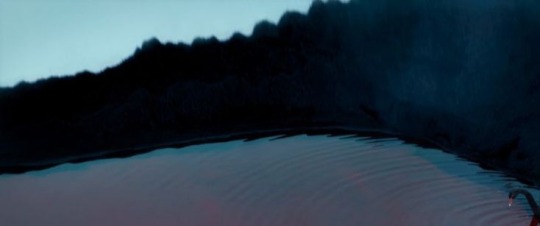





Cassandra, Florence + The Machine//the 25th year of marriage, it goes on”, Alicia Ostriker//Hansel and Gretel, Anne Sexton//George Seferis, from Collected Poems 1924-1955; "Stratis Thalassinos Among the Agapanthi"//Du Juan, Wallpaper China (2020)
#web weaving#mine#quotes#words#poetry#cassandra#florence and the machine#florence + the machine#alicia ostriker#anne sexton#hansel and gretel#george seferis#du juan#blood#horror#macabre#gothic#women in horror#violence#hunger#blood thirst#monster#witch#witchy#revenge#🔮#darkness#red#black
33 notes
·
View notes
Photo

A collection of over 40 writers and their work from World War 1 and the years that followed.
11/11. Happy Armistice Day!
This is by no means a guide so much as it is recommendations and selections from my reading list, but I hope it can interest others in some extraordinary or important lives. Enjoy!
POETRY
Richard Aldington (1892-1962)
British. 2nd Lieutenant, Royal Sussex Regiment.
Themes: Callousness, Apathy, Sound, Myth & History, Art
War and Love 1915-1918 (1919)
"Trench Idyll"
"In The Trenches"
"Apathy"
"Soliloquy I" & "Soliloquy II"
Exile and Other Poems (1923)
“Eumenides”
“At a Gate by the Way”
Edmund Blunden (1896-1974)
British. 2nd Lieutenant, Royal Sussex Regiment.
Field: Ypres, Somme, Passchendaele
Themes: Survivor's Guilt, Isolation, Nature, Post-War Reflection
The Waggoner (1920)
"The Estrangement"
The Shepherd and Other Poems of Peace and War (1922)
"11th R.S.R."
"Reunion in War"
"The Troubled Spirit"
"War Autobiography: Written in Illness"
"Third Ypres: A Reminiscence"
Rupert Brooke (1887-1915)
British. Sub-lieutenant, British Mediterranean Expeditionary Force, but died of sepsis before reaching Gallipoli.
Themes: Colonialism, Memory & Death
1914 and Other Poems (1915)
"1914"
Robert Graves (1895-1985)
British. Captain, Royal Welch Fusiliers.
Field: Somme, but also in a POW and Garrison camp iirc.
Themes: Camaraderie, Grief, Flippancy/Humor, Personal Change
Faeries and Fusiliers (1919)
The Pier-Glass (1921)
"Lost Love"
Collected Poems 1955 (1955)
"Recalling war"
Frederic Manning (1882-1935)
Australian & British. Private, King's Shropshire Light Infantry. Lance Corporal, 7th Battalion. 2nd Lieutenant, Royal Irish Regiment.
Field: The Somme, Ancre
Themes: Collective identity, Numbness, Individuality, Ritual as a coping method, Myth
Eidola (1917)
"αυτάρκεια"
Wilfred Owen (1893-1918)
British. 2nd Lieutenant, Manchester Regiment.Also see: The Hydra (1917-1918), the Craiglockhart War Hospital magazine.
Field: Northern France
Themes: Inhumanity, Protest, Disgust & Pity
Poems (1921)
“Apologia Pro Poemate Meo”
“Mental Cases”
“Dulce et Decorum Est”
"S.I.W" (Self-Inflicted Wound)
“Wild With All Regrets”
Poems of Wilfred Owen (1931)
“The Unreturning”
The Complete Poems and Fragments (1984)
Isaac Rosenberg (1890-1918)
British (also Jewish!). Private, 12th Bantam Battalion of the Suffolk Regiment, then South Lancashire Regiment, then King's Own Royal Lancaster Regiment, then King's Own Royal Regiment.
Also see: Joseph Cohen Collection of Rosenberg documents and artifacts
Field: Arras
Themes: Heroism, Loathing, Confusion
Poems (1922)
"Significance"
"The Immortals"
Delphi Complete Poetry, Plays, Letters and Prose of Isaac Rosenberg (2015)
Not free, but like the one for Wilfred Owen, I recommend these collections since they're super cheap (like $3) and mostly comprehensive even if there are some formatting errors.
Siegfried Sassoon (1886-1967)
British. 2nd Lieutenant, Royal Welch Fusiliers.
Also see: A Soldier's Declaration.
Field: The Somme, Arras
Themes: Activism, Self-Expression, Nature, Leadership, Camaraderie, Grief
The Old Huntsman and Other Poems (1918)
“The Kiss”
“The Last Meeting”
Counter-Attack and Other Poems (1918)
"Suicide in the Trenches" (sometimes typo'd, like in Collected Poems, as "Suicide in Trenches")
"Repression of War Experience"
"The Dream"
A Suppressed Poem (1918) (alternative/full text)
War Poems (1919)
"Everyone Sang"
Picture-Show (1920)
"Concert Party"
"Phantom" (removed from Collected Poems in 1961)
"Aftermath"
Vigils (1936)
"War Experience"
"Revisitation"
The Collected Poems 1908-1956 (1961)
Contains text edits and revisions of previous work.
MEMOIR
Will R. Bird (1891-1984)
Canadian. 42nd Battalion, Royal Highlanders of Canada.
Field: France and Belgium
Also see: his bibliography. His work seems to have been popular, but is now exceedingly rare other than in some recent reprints.
And We Go On (1930)
Reissued as Ghosts Have Warm Hands (1968) which removes several anecdotes--and in particular, removes many instances of the ghost of his brother (who often appears to guide him after dying before Bird enlisted).
Thirteen Years After: The Story of the Old Front Revisited (1931)
Funded by Maclean's Magazine, Bird returned to France and wrote a series of reflections.
The Communication Trench: Anecdotes & Statistics from the Great War, 1914-1918 (1933)
A Soldier's Place: the War stories of Will R. Bird (2018)
Fifteen anecdotes from various war-time and post-war publications.
Edmund Blunden (1896-1974)
Undertone of War (1928)
Philip Gibbs (1877-1962)
British. Extraordinarily popular war journalist and later war correspondent.
Heavily censored in publications like the Daily Telegraph and Daily Chronicle.
Field: Western Front
The Soul of the War (1915)
From Bapaume to Passchendaele, 1917 (1918)
Reissued as The Struggle in Flanders on the Western Front, 1917 (1919)
The Way to Victory: Vol 1: The Menace and Vol 2: The Repulse (1919)
Wounded Souls (1920)
Now It Can Be Told (1920)
US title: The Realities of War
More That Must Be Told (1921)
Robert Graves (1895-1985)
Goodbye to All That (1929)
Censored (1929), Revised (1957), and I think Uncensored (2014)
Also a personal memoir--the first few chapters detail his childhood and discuss homosexuality.
Arnold Gyde (1894-1959)
British. Captain, 2nd Battalion South Staffordshire Regiment.
Field: Le Havre, Mons, Aisne
Contemptable (1916) as Casualty
Part of the Soldiers’ Tales of the Great War series
T. E. Lawrence (1888-1935)
British. Archeologist but mostly a military informant.
Field: Arab Revolt, Palestine
Themes: Isolation, Brotherhood
Seven Pillars of Wisdom (1922)
Abridged "subscribers" edition subtitled with A Triumph (1926), Further abridged as Revolt in the Desert (1927), Unabridged as "The Oxford Text" (1997)
Also see: With Lawrence in Arabia (1924) by Lowell Thomas
Thomas was a war correspondent for the US, and who filmed and photographed Palestine and Lawrence and created the media boom surrounding the two.
Also see: Lawrence and the Arabs (1927) by Robert Graves
This book was initially panned for showing Lawrence as more of a flawed person than England's glorious war hero.
Edward C. Lukens
American. Lieutenant, 320th Infantry 80th Division.
Field: Meuse-Argonne
A Blue Ridge Memoir (1922)
Includes an afterword titled “The Last Drive and Death of Major G. H. H. Emory” by E. McClure Rouzer
Wilfred Owen (1893-1918)
Journey from Obscurity: Wilfred Owen, 1893-1918 (1963-1965) by Harold Owen
Published in three volumes: Childhood, Youth, and War
E. M. Roberts
American. Lieutenant, RAF.
A Flying Fighter: An American Above the Lines in France (1918)
I’m not finding much on this book atm, but I remember finding some articles after I had read the book that mentioned much of it was embellished.
Siegfried Sassoon (1886-1967)
Siegfried's Journey, 1916-1920 (1945)
Discusses the range of his life on leave or otherwise away from the battlefield, along with his post-war travels and struggles. For his more military memoirs, see the Sherston Trilogy below.
Also see: Lady Ottoline's Album (1976)
included entirely bc there's a cute pics of him (pg 66-67,90-93) but also bc there's a lot of cool ppl in it (also Robert Graves 68, Edmund Blunden 69)
Diaries:
Scans of 1915-1922, 1924-1927, 1931-1932: Sassoon Journals @ Cambridge
Siegfried Sassoon Diaries 1915-1918 (1983)
Highlights: 27 May 1916. 13 July 1916. 23 April 1917. 17 April 1918. 27 April 1918. 9 May 1918. 19 December 1917.
Siegfried Sassoon Diaries 1920-1922 (1981)
Siegfried Sassoon Diaries 1923-1925 (1985)
FICTIONAL MEMOIR
Giving a third person narrator one's trauma or life allows the writer to view those events in a new light–and also partially absolve themselves from ownership of their actions and feelings. Thus, it was super popular to deflect the shame of trauma.
Richard Aldington (1892-1962)
Death of a Hero (1929)
Uncensored in two volumes (1930), in one volume (1965) and (1984)
Roads to Glory (1930)
Short stories
Hervey Allen (1889-1949)
American. Lieutenant, 111th Infantry Regiment of the 28th Division
Field: Marne, Aisne, Château-Theirrey
Toward the Flame (1926) (limited preview)
Henri Barbusse (1873-1935)
French. Western Front. Anti-war.
Under Fire: The Story of a Squad (1916)
One of the first WWI novels published. Formative work for Sassoon, but also popular with Owen iirc.
Larry Barretto (1890-1972)
American. Ambulance driver in France and Belgium.
A Conqueror Passes (1925)
The soldier protagonist swiftly falls into depression upon returning to civilian life, so he abandons everything to return to France. Where he hopes to return to the mental occupation of service, he finds instead that the world has moved on without him.
James Norman Hall (1887-1951)
American. Posing as a Canadian: Royal Fusiliers. After being discovered, Lafayette Escadrille and Lafayette Flying Corps, then Captain of US Army Air Service. German POW for several months.
Kitchener's Mob: The Adventures of an American in the British Army(1916)
Describes the Battle of Loos during his time as a machine gunner with the Royal Fusiliers.
High Adventure: A Narrative of Air Fighting in France (1918)
Also see: The Lafayette Flying Corps Vol 1 and Vol 2 (1920), a history written with fellow pilot Charles Bernard Nordhoff.
Also see: Falcons of France (1929), another memoir written with Charles Bernard Nordhoff.
John Dos Passos (1896-1970)
American. Ambulance Driver in France (Norton-Harjes Ambulance Corps) & Italy (American Red Cross)
One Man’s Initiation: 1917 (1920)
Reissued as First Encounter (1945)
Three Soldiers (1921)
Frederic Manning (1882-1935)
The Middle Parts of Fortune: Somme and Ancre, 1916 (1929) as Private 19022
Uncensored in two volumes
Censored edition is Her Privates We (1929), and Uncensored (2014)
Primarily depicts the mundane life of a private. A deserter crops up throughout the novel for commentary on the intersection of mental illness and perceived cowardice. The chapters on the trenches are extraordinary imo, and it's a great look at the unsensational life of billets and drill that most accounts leave out.
Charles Bernard Nordhoff (1887-1947)
American. Ambulance driver, then Lafayette Flying Corps, then Lieutenant of US Army Air Service
The Fledgling (1919)
Series of letters (and dairy entries?)
Also see: The Lafayette Flying Corps Vol 1 and Vol 2 (1920), a history written with fellow pilot James Norman Hall.
Also see: Falcons of France (1929), another memoir written with James Norman Hall.
Erich Maria Remarque (1898-1970)
German. 2nd Guards Reserve Division, then 15th Reserve Infantry Regiment, 2nd Company, Engineer Platoon Bethe.
Field: Hem-Lenglet Torhout and Houthulst.
All Quiet on the Western Front (1929)
The Road Back (1931) (limited preview)
Siegfried Sassoon (1886-1967)
The Sherston trilogy follows his entire service, although purged of anything literary or concerning his family. He also changed the names of almost everyone in it. The third book does a great job confronting the trauma he swears he doesn't have up until the last couple pages.
Memoirs of a Fox-Hunting Man (1928)
Memoirs of an Infantry Officer (1930)
Sherston's Progress (1936)
FICTION
More on the Internet Archive
Hervey Allen (1889-1949)
It Was Like This: Two Stories of the Great War (1940)
Leonid Andreyev (1871-1919)
The Confessions of a Little Man During Great Days (1917
Russian. Account of a fictional banker in St. Petersburg struggling through war shortages and family strife. Anti-war.
E. F. Benson (1867-1940)
British. Archeologist, Greek Scholar, Worked in Cairo with T. E. Lawrence. also hes gay
Up and Down (1918)
An at-home drama which begins pre-war and descends into featuring the relationship of letters between home and the front.
Dodo Wonders-- (1921)
Sequel to Dodo: A Detail of the Day (1893) Dodo’s Daughter (1913) and Dodo the Second (1914) social dramas.
Will R. Bird (1891-1984)
Private Timothy Fergus Clancy (1930)
John Buchan (1875-1940)
Scottish. Popular novelist, Writer for the Propaganda Bureau, Director of Intelligence, and Lieutenant of Intelligence Corps
The Thirty-Nine Steps (1915)
First in the Richard Hannay series, suspense spy novels meant to sensationalize war intrigue and German barbarism.
Also see: Nelson's History of the War, a serial which began in 1915 to become a 24-volume account of censored and pro-Allies Great War history.
Wilfrid Heighington (1897-1945)
Canadian. Lieutenant, 4th Canadian Infantry Brigade
Field: The Somme, Vimy Ridge
The Cannon’s Mouth (1943)
Edward Edward Plunkett, Lord Dunsany (1878-1957)
Anglo-Irish. Captain, Royal Inniskilling Fusiliers. Also participated in the Easter Uprising. Traveled to Ploegsteert, St-Emilie, the Somme, and Bourlon Wood as work for the MI7 (b) creating propaganda.
Tales of War (1918) & Unhappy Far-Off Things (1919)
Short stories largely created as propaganda and published in various papers before being collected in book form.
Also see: Patches of Sunlight (1938), his autobiography.
Rebecca West (1892-1983)
The Return of the Soldier (1918)
A rather fanciful novel of a woman confronting her cousin soldier returning home with amnesia, having forgotten the past 15 years of his life from shell-shock.
LETTERS
T. E. Lawrence (1888-1935)
I'm more familiar with Lawrence's post-war relationship with mental illness, which seems to be rooted in his tendency for self-reproach. He consistently bemoans his difference from the others, and details his reliance on military companionship for connections.
Highlights: To Lionel Curtis, 19/3/23. To Robert Graves, 12/11/22. To Lionel Curtis, 14/4/23.
Also published in: Lawrence, T. E., and Garnet, David. The Letters of T. E. Lawrence. Doubleday, Doran & Company, 1939.
Wilfred Owen (1893-1918)
Owen defends himself at every opportunity to eliminate the possibility that his distress is from cowardice, so while his testimony is valuable for its real-time recording, it's more difficult to pick out such violent and clear instances of trauma compared to other writers.
Also see: Uncensoring Owen Project
Highlights: To Susan Owen, 16/1/17. To Susan Owen, 4/2/17. To Susan Owen, 18/3/17 (which describes The Sentry). To Susan Owen, 6 (or 8)/4/17. To Susan Owen, 1/5/17. To Mary Owen, 8/5/17. To Siegfried Sassoon, 5/11/17. To Susan Owen, 6/17. To Susan Owen, 31/12/17. To Susan Owen, 4 (or 5)/10/19. To Siegfried Sassoon, 10/10/18.
Siegfried Sassoon (1886-1967)
Siegfried Sassoon letters to Max Beerbohm : with a few answers (1986)
Vera Brittain (1893-1970)
& Roland Leighton, Edward Brittain, Geoffrey Thurlow, Victor Nicholson
Letters From A Lost Generation: First World War Letters of Vera Brittain and Four Friends (1998)
PLAYS
R. C. Sherriff (1896-1975)
British. East Surrey Regiment
Field: Vimy Ridge, Loose, Passchendaele
Journey's End (1929)
Also novelized (1930) with Vernon Bartlett
J. M. Barrie (1860-1937)
Scottish. Propagandist. Also see: famous author propagandists
Echoes of the War (1918)
Four humorously written yet hard-hitting plays concerning the war, particularly interpersonal relationships at home. More like satire than jingoism tbh.
MEDICAL ESSAYS
Shell-shock and Other Neuropsychiatric Problems Presented in 589 Case Histories (1919) by E. E. Southard (ableist af but these case studies are an extraordinary insight into the breadth of symptoms and their treatment. highly recommended.)
War Neuroses and Shell Shock (1919) by F.W. Mott
Hysterical Disorders of Warfare (1918) by Lewis Yealland
Army Report of The War Office Committee of Enquiry into Shell Shock (1922)
Shell Shock and Its Lessons (1918) by Sir Grafton Elliot Smith, Tom Hatherley Pear
Repression of War Experience (1917) by W.H.R. Rivers
Conflict and Dream (1924) by W.H.R Rivers
Instinct and the Unconscious (1924) by W.H.R Rivers
MEDICAL ACCOUNTS
Harold Barclay (1872-1922)
American. Captain, American Expeditionary Forces. Roosevelt Hospital Unit, then 42nd Division.
Field: Château-Thierry, St.-Mihiel
A Doctor in France, 1917-1919 (1923)
His diary--also published after his death.
Vera Brittain (1893-1970)
Testament of Youth (1933)
Also see: Vera Brittain and the First World War: The Story of Testament of Youth (2014) for its extra chapter on Edward Brittain and his oft-discussed death (spoiler: they confirmed he was gay).
Ellen La Motte (1873–1961)
The Backwash of War (1916)
American. A collection of fourteen stories from the hospitals of France.
Helen Zenna Smith/Evadne Price (1888-1985)
Not So Quiet: Stepdaughters of War (1930) (limited preview)
Written in the style of Remarque’s All Quiet on the Western Front using Winifred Constance Young, an actual ambulance driver as inspiration.
Sequels: Women of the Aftermath/One Woman’s Freedom (1931), Shadow Women (1932), Luxury Ladies (1933), They Lived With Me (1934)
May Sinclair/Mary Amelia St. Clair (1863-1946)
British. WSPU and WWSL member/Suffragette. Founding supporter of the Medico-Psychological Clinic in London, Munro Ambulance Corps in Flanders for a few weeks.
A Journal of Impressions in Belgium (1915)
OTHER ACCOUNTS
A. T. Fitzroy/Rose Allatini (1890-1980)
Despised and Rejected (1918)
Austrian-British. A novel following members of the CO and Pacifist movement. also v gay
Father Bernard Carey (1865-1932)
Leaves from the Diary of a Catholic Chaplain in the Great World War
(1920)
Irish. A chaplain's memoir of Egypt and East Africa, and the religious and racial intolerance in the military.
Philip Gibbs (1877-1962)
Germans on the Somme (1917)
John Masefield (1878-1967)
British. Poet Laureate. Briefly a Red Cross orderly, then propogandist with the Department of Information.
Gallipoli (1915)
Account of the campaign's failure to counteract anti-German propaganda in the US.
The Old Front Line (1918)
Eyewitness account of the Somme. Revisited and further completed in Battle of the Somme (1919)
The War and the Future (1918)
Also see: John Masefield's Letters from the Front, 1915-1917 (1985)
Also see: His poem “August 1914″
William Le Roy Stidger (1885-1949)
American. YMCA Pastor working with the AEF.
Soldier Silhouettes on our Front (1918) & Star Dust From The Dugouts (1919)
Stories of Christian faith through portraits of various soldiers.
Stanley Washburn (1878-1950)
American. Correspondent of the London Times in Russia.
Field Notes From the Russian Front (1915)
The Russian Campaign: April to August 1915 (1916)
Victory In Defeat - The Agony Of Warsaw And The Russian Retreat (1916)
Field Notes From the Russian Front (1917)
BLOGS & PROJECTS
Siegfried Sassoon resources
Cambridge Sassoon Project Blog
T. E. Lawrence texts and resources
Life timelines for several poets, like Sassoon and Owen
War Poets Association
Oxford War Poetry Digital Archive
List of additional war poets
WWI fiction resource
WWI timeline and artifacts resource
Today in WWI with Literary and Historical contexts
List of WWI authors and dust jackets
Additional WWI writers
Great War Theatre
Essay on American pilots in other armies
#writing#siegfried sassoon#wwi literature#tbh making this thing#made me want to make a reading blog#like some of the project blogs linked#anyway this thing is p severely lacking in stuff from Not The Western Front#and lord knows i want to find more stuff on the eastern front#so ill likely update this when i find some good ones#i put in brooke bc his poetry is genuinely good#but i neglected other early poets#(i usually find women poets publishing early tbh)#bc their work just..isnt v enjoyable or written v well#or just blatant uninspired jingoism#like. i included buchan and some others bc its important and interesting stuff#but Defeating The Purposefully Vague Evil Beast For Christ And Goodness#gets real old real quick when it isnt well done#anyway theres my meta lmk if u have any questions#i hope all the links work#brianna babbles
17 notes
·
View notes